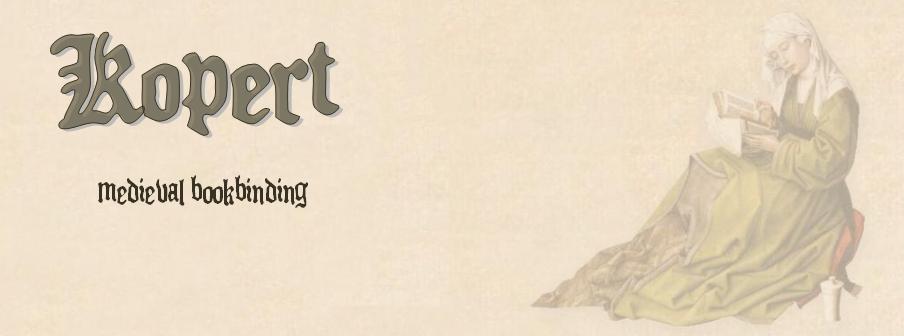 It's time to update some of my "work in progress" posts, so here is something about the little girdle book again.
It's time to update some of my "work in progress" posts, so here is something about the little girdle book again. First of all, it turned out quite different from what I originally had in mind...
I decided against a cover made of silk for two reasons:
The friend that is going to use it is a craftsperson, not a rich member oft nobility. So a book bound in silk might be a little bit over the edge - and then I found this picture of a very cute girdle book with a striped leather cover that we both liked very much.
Decision made :-)
The girdle book bound in silk is not totally off my agenda though - I just somehow moved it from the to-do-list onto the wishlist ;-) Now I have to find the perfect text for it. Maybe it's going to be the catechism the Dance of Death is from...
Back to the little girdle book:
Decision made :-)
The girdle book bound in silk is not totally off my agenda though - I just somehow moved it from the to-do-list onto the wishlist ;-) Now I have to find the perfect text for it. Maybe it's going to be the catechism the Dance of Death is from...
Back to the little girdle book:
The leather I was going to use for the cover is a very smooth, cream coloured sheeps leather tanned with oxalic acid. Unfortunately, dirty fingerprints stay on easily...
Normally books are blindtooled after attaching the leather to the boards - but here I had to do the blindtooling first. The parallel lines were drawn with a heated blunt knive (really blunt, not only "not really sharp"!) along a wooden ruler. That worked quite nicely and I hope it won't wear off during use.
I glued the leather to the wooden boards with animal glue, which has a great advantage here: You don't have to soak the leather with glue as with wheatpaste, you just apply the glue to the boards.
 This way its a lot easier to make sure the blindtooled lines stay parallel than with wobbly wet leather :-)
This way its a lot easier to make sure the blindtooled lines stay parallel than with wobbly wet leather :-)
Normally books are blindtooled after attaching the leather to the boards - but here I had to do the blindtooling first. The parallel lines were drawn with a heated blunt knive (really blunt, not only "not really sharp"!) along a wooden ruler. That worked quite nicely and I hope it won't wear off during use.
I glued the leather to the wooden boards with animal glue, which has a great advantage here: You don't have to soak the leather with glue as with wheatpaste, you just apply the glue to the boards.
 This way its a lot easier to make sure the blindtooled lines stay parallel than with wobbly wet leather :-)
This way its a lot easier to make sure the blindtooled lines stay parallel than with wobbly wet leather :-) On the top and on the sides of the boards the leather was folded around the edges and glued to the inside of the board. Extant leather on the corner was cut away and the edges were additionaly secured by sewing (I don't have a picture at the moment). At the top of the back the leather was folded inside and glued in place so that you can see the silk wrapped headband.
Five little cast flowers were riveted to the boards as both decoration and protection for the leather surface. Now I have to attach the clasp (you can already see the holes for the nails in the picture above) and finish the loose part of the leather with a cord just like on the original or gather it in a turks head knot - depends on the future owners choice :-)




